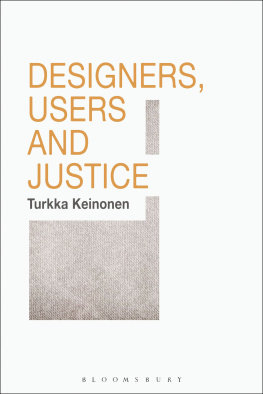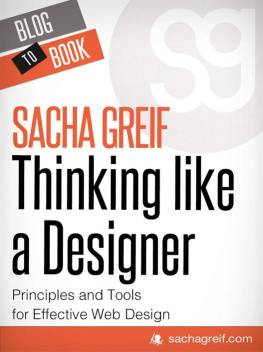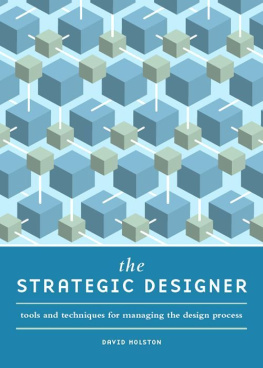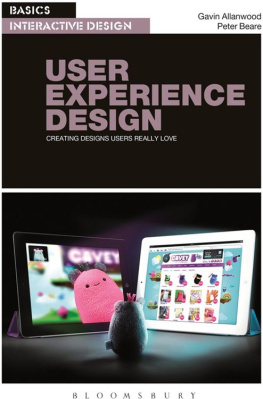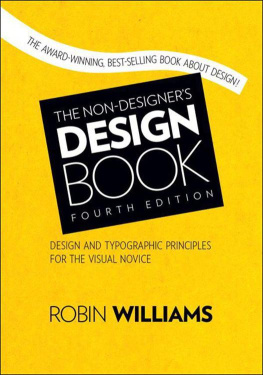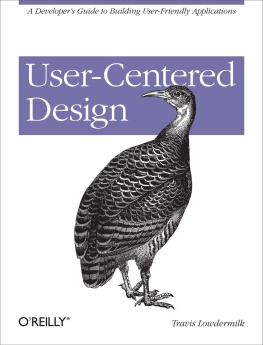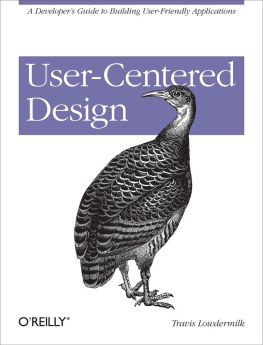Designers, Users
and Justice
Designers, Users
and Justice
TURKKA KEINONEN
Bloomsbury Academic
An imprint of Bloomsbury Publishing Plc
To Reino Keinonen
Hero in justice
Contents
M y point of departure is the designers mission to serve people, satisfying their needs and creating wellbeing. Often we speak about the users for whom we design, who acquire the things we have designed, and use them for their own purposes and purposes we have suggested. Sometimes these users are the products of our imagination, but often they are real. Perhaps they have no other choice but to use our designs. Or perhaps it is their neighbor who acquires and uses our designsvehicles, entertainment electronics, garmentsand they have little option but to tolerate this. It all comes down to use, whoever is using the design. They may end up disliking their neighbor for having such a flamboyant car, noisy stereo or provocative outfit, while actually they should dislike us, the designers, and we should realize that. Designers have a responsibility to help ensure that people like their neighbors. That is why I suggest that design should be seen as a societal function that distributes pleasures and pains, resources for good life, and capabilities to achieve valuable goals. It influences distributional justice.
This book contributes to the ethics of human-centered design. Human-centered design is an orientation of design that pays serious attention to involving users and other stakeholders, with all their needs, wishes, and contextual requirements of use, in the design process from its very beginning to the end. If I were to explain my motivation in writing this book in human-centered design terms, I could say I have long believed in and worked to promote ideas of usability and user experience but have found them inadequate. A new angle is needed. Usability is a branch of human-centered design that focuses on evaluating users ability to complete tasks with devices and systems. I wrote my postgraduate theses about inclusive design, usability, and consumers decision-making in the mid-1990s and became familiar with usability. I observed, as did many others, that usability was too achievement-oriented and instrumental to be seen as a fundamental goal and framework for human-centered design, and switched my attention to user experience. User experience pays attention to aesthetics, hedonic experiences, memories and dreams, social context and others in addition to users capability to achieve practical goals. It focuses on subjective experience and perception of use. But then I became disappointed with the idea of user experience as well, finding it too hedonistic and conceptually diluted. The world or the way we see it has changed, and I am confident that design is more than ever needed to address deeper issues than hedonic pleasures. Another angle needs to be found if we want human-centered design to remain relevant. Most of my colleagues would say this new angle is collaborative or participatory design, which elevates users from being subjects of user studies to active and equal contributors of design alongside professional designers. I dont disagree, but in this book I start by looking for the answer from another directionone that we could perhaps call responsible design or design for justice. I will turn the lens from answering the usual question of how to design products that are good for their users towards a seldom-asked question: how can we ethically justify human-centered design? A key concept in this book is distributional justice, which refers to the justice of allocating assets, happiness, or possibilities of action between individuals.
Design is a form of human behavior. Some say it is particular to and characteristic of humans. This means that just design is almost equal to justice, and design ethics is almost equal to ethics. There are more than enough academic traditions in which we study just distribution; ethics, welfare economics, and the political philosophy of distributional justice are the ones addressed in this book. The sociology of consumption and the adoption of new technologies are also relevant to the discussion. Thus, I had to be selective and decided to trust the classics. I refer to Aristotle, Jeremy Bentham, John Stuart Mill, John Rawls, Robert Nozick, Alasdair MacIntyre, Amartya Sen, and Martha Nussbaum. For a person like me, who has been designing what we call new technologies such as digital communication and industrial automation, and who believed that design has recently changed to something it has never been before, it has been healthy to notice how much the classics have to offer in terms of understanding the design of today.
The book is written in a dialogue format. In its six dialogues there are plenty of questions, arguments, and assumptions, and these are questioned and debated in a way that can more usefully take place in a dialogue between two people trying to make sense of these issues, than in a document where a sovereign author dictates how they should be understood. I hope and believe that, considering the nature of the topic under discussion, this informal approach can be fruitful. Presenting the results in another format implying confidence in the proposals put forward would be misleading.
The discussants are Scholar and Practitioner. Scholar is the more talkative of the two. He shares his personal experiences and knowledge of human-centered design, ethics, and justice. He seems to be excited to have an interested audience. Practitioner is not ignorant about design theory either, but he mostly contributes by asking questions about how design should be practised in a just manner. But why dont I let them speak for themselves?
Hi, Scholar! May I bother you for a minute? Would you like to introduce yourself to the reader?
S: I dont know what to say. Why dont we let Practitioner introduce me and then I can introduce him?
Thats a good idea. Practitioner, did you hear that?
P: I did. Well, Scholar is a teacher of human-centered design. Hes critical and reflective and seems to have a hard time believing in what hes been teaching about human-centered design. That can make him a bit hard to follow. Hes not very good at understanding what we practitioners already know and sometimes he gets carried away by his own elaboration of a topic. When he gets sidetracked, he tends to lose the thrust of his main argument.
S: Thanks. I guess youre right. I suppose I assumed you already knew quite a lot.
P: I do.
S: What should I say about you? Youre very sensitive to the idea of justice in your own practice, and eager to learn. You ask good questions, summarize my incomplete explanations, and keep me on track when I start to digress from my argument. You also contribute with your theoretical knowledge, so that I no longer know whos the scholar and whos the practitioner. Well, I also have a history of having practiced design. We often face questions that we answer with somewhat questionable simplifications. In these cases I ask that you agree to accept my simplified interpretation so that we can continue. I feel that we create interpretations together, even though Im the more vocal one. I also let or even push you to summarize and crystallize the results of our discussions. I hesitate to wrap up long discussions with only a few words, but I dont mind you doing it. We are not really very different.
P: Thanks.
Thanks guys.
This format in which Scholar and Practitioner discuss ethical questions could perhaps be called a Socratic dialogue. Socratic dialogue refers to the manner in which Socrates in Platos famous texts challenged his fellow Athenians by questioning their assumptions. It also refers to an educational process based on examples and counter-examples. The process helps the learners to understand their own assumptions, reject their false preconceptions, and learn more coherent conceptions. Scholars and Practitioners discussions are in some respects Socratic. They are indirect, ingressive and The dialogues are also a process of self-scrutiny for Scholar and Practitioner, by which they confront their own preconceptions and engage in collaborative sense-making. However, both the ingenuity of Socrates on the streets of Athens and the rigorous educational process of Socratic dialogue are more systematic and more sophisticated learning vehicles than Scholar and Practitioners dialogues. Without the proper Socratic qualities we could perhaps call their talks a Schnian dialogue. Donald Schns example of teacher Quist and student Petra engaging in a reflective process of elaborating an architectural plan is well known to designers. Quist and Petra used pen and paper, but that is not always necessary for reflection. Schns second example is of a therapy dialogue between an anonymous Supervisor and a Resident (Schn 1983: 10527). Schn uses this to show how dialogue is equally a platform for reflective sense-making. Scholar every now and then attempts to tell Practitioner something that he already knows, but the outcomes of the discussions are nevertheless unknown to both of them at the beginning and the dialogue is a way for them to reflect and learn. In this respect, Scholar and Practitioner tell a true story about the author, who has been using their discussion as a way to approach both the answers and the questions the dialogues deal with.

